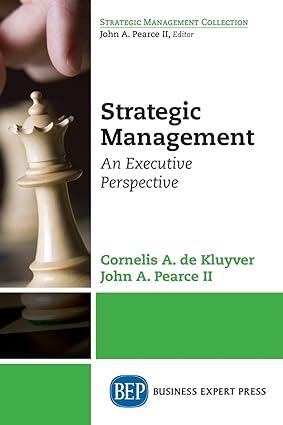Question
SECTION A [40 MARKS] Read the case study below and answer ALL the questions that follow. Crashing Construction Project Schedules by Relocating Resources Construction projects
SECTION A [40 MARKS] Read the case study below and answer ALL the questions that follow. Crashing Construction Project Schedules by Relocating Resources Construction projects constitute a particular challenge for managers. The factors that contribute to their unpredictability include the susceptibility of construction processes to weather, uniqueness of designs, high employee turnover rates, various supply-related logistic problems, and high plant failure rate. While these projects are commonly understood as exceptionally difficult to deliver on time, project owners are rigorous about deadlines specified in the contract. First, they need to conform to the bank loan conditions (schedule changes are not welcome, especially in terms of postponing the completion date). Second, the clients desire to benefit from the projects as quickly as possible. Therefore, they tend to set short and fixed due dates with no tolerance of the ``unexpected obstacles'' likely to be encountered by the contractor. Given limited project budgets, short times for completion, scarce human resources, and high risk, the problem of compressing construction schedules is far from trivial. The well established methods, such as CPM, PDM, LSM, PERT prove inadequate for such challenges. Especially with repetitive projects, the main disadvantages of these methods are imprecise visualization (even with small projects, the bar charts or network diagrams are difficult to handle) and failure to capture the continuity of work and the dynamics of production rates. Inappropriate scheduling methods and tools mean more than the planner's lack of comfort: they imply oversimplifications and omissions. These result in scheduling errors and the contractor's accepting unrealistic deadlines. What follows are contractual penalties, the client's disappointment, and harm to the contractor's reputation. Inadequate scheduling tools fail to prevent the planner from misallocating resources, and the resulting workflow disturbance reduces labor productivity, increases the cost of works, and damages the workforce morale. For this reason, the research and project management community strives to develop more practical planning methods. An attempt is made to provide a tool to assist construction managers in scheduling fast-track projects as well as in crashing schedules to make up for delays. The idea is to allow modifications of crew composition, so using some members of crews performing non-critical processes to reinforce the crews busy with critical tasks. This way, the critical tasks can be delivered quicker, though at the expense of other tasks. The overall project duration is reduced, while the pool of resources stays fixed. However, for greater flexibility, employing extra resources is also allowed. The novelty of the approach consists in the following: - The model assumes that the crews can be split into teams and stay operational even if a team is relocated to other tasks. A typical assumption in construction scheduling is that of fixed crew composition. This approach may foster the learning effect. However, if crews are composed of a number of teams, and allocated to a task of small workload, their work becomes inefficient. It is thus considered practical to allow transferring out a part of the crew and use it efficiently elsewhere. - The proposed approach integrates two concepts of project crashing _ by employing extra resources (subcontracting), and by relocating in-house resources. The idea of relocating teams helps reduce the project duration with no need to hire additional resources or change construction methods to faster but more costly ones. This way, acceleration generates no extra cost. - The idea of setting the upper limit to the cost of sub-contracted works helps manage in-house resources rationally. Many existing models for schedule crashing rely on subcontracting (increasing the resource pool). They consider the direct cost of subcontracting but ignore hidden costs associated with reducing the productivity of in-house resources and their standby pay. The tool presents a mixed-integer linear program (MILP) algorithm for compressing schedules by changes in the resource allocation - namely by splitting crews into teams and relocating teams to processes that are reasonable to be accelerated. Team relocation was observed in the construction practice, though not found to be rejected in schedule optimization algorithms. A further reduction of construction duration was also enabled through subcontracting. Both methods were incorporated into one optimization model. Source: Tomczak, M. and Jaskowski, P., 2020. Crashing construction project schedules by relocating resources. Ieee Access, 8, pp.224522-224531. Answer ALL the questions in this section. QUESTION 1 (20 Marks) The case study refers to a resource scheduling tool that can lead to an improvement in the robustness of the schedule of the project and therefore combat the effect of delays on the schedule of a construction project. Reframe, from your perspective as a project manager, how the tool claims to achieve this state of improvement.
Step by Step Solution
There are 3 Steps involved in it
Step: 1

Get Instant Access to Expert-Tailored Solutions
See step-by-step solutions with expert insights and AI powered tools for academic success
Step: 2

Step: 3

Ace Your Homework with AI
Get the answers you need in no time with our AI-driven, step-by-step assistance
Get Started


